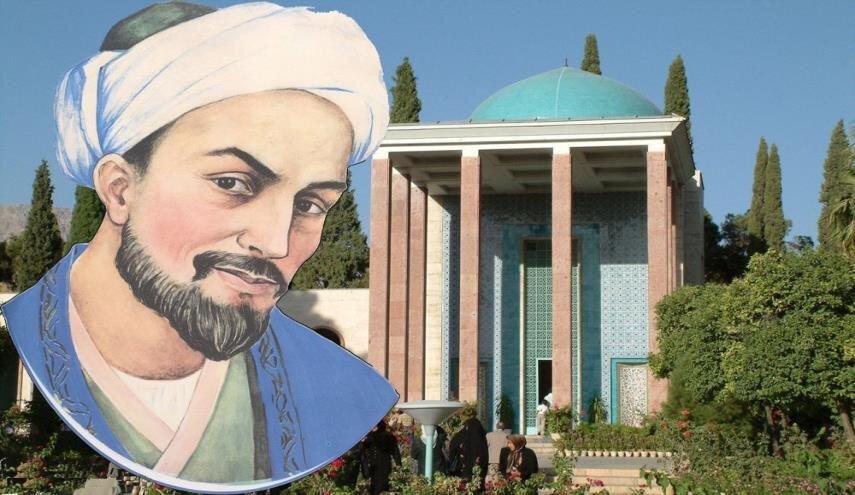One of the most prominent Persian poets in Iranian history, Abu Muhammad Muslif al-Din bin Abdallah Siraj, known by his pen name Sadi, was born in Shiraz about 1200 and died around 1292.
Saadi is widely recognized as one of the great poets of the classic literary tradition, and has earned the nickname “Master of Speech” or “Word Smith” among Persian scholars. He is also cited in Western traditions.
He is highly recognized for the quality of his writings and the depth of his social and moral thinking.

Saadi was born in Shiraz around 1200. He died in Shiraz around 1292. He lost his father in his childhood. With the help of his uncle, Saadi completed his early education at Shiraz. He was then sent to study at Baghdad, the famous Nezamiy University, where he acquired traditional Islam.
The uncertainty following the Persian invasion of Mongols led him to wander abroad through Anatolia, Syria, Egypt and Iraq. He also mentions traveling to India and Central Asia in his work. Saadi is very similar to Marco Polo, who traveled the area from 1271 to 1294. He was an old man when he reappeared in his hometown of Shiraz. He spent the rest of his life in his birthplace until he died.

His most famous works are Bastan (orchard) and Golestan (rose garden). Bastan is entirely a poetry (magnificent meter) and consists of stories that properly explain the standard virtues (justice, freedom, humility, satisfaction) recommended by Muslims. Golestan is primarily prose and contains stories and personal anecdotes. The text is scattered with a variety of short poems, including sayings, advice and humorous reflection.

A sense of humor plays an important role in Saady’s work. You can find the distinctive roots in the poet’s thoughts and perspectives. Saadi Shirazi’s poems are full of cheerfulness and esprit.
He prevents the slurredness of poetry by using his sense of humor. In this way, Saadi made his poems more influential and effective.
Bani Adam, meaning “son of Adam” or “man,” is the name of a famous poem by his Golestan Persian poet Sadi Siraj.
“Humans are all members of the whole world.
In the creation of one essence and soul
If one member is suffering from pain
Other members are worried
If you don’t have any sympathy for human pain
A human name that cannot be held. ”

Saadi’s grave is located in the southern part of Shiraz. His Mausoleum, also known as Saadieh, is one of Iran’s major tourist attractions.
The tomb was first built in the 13th century. However, after being destroyed in the 17th century, it remained untouched until the current building was built in the 1950s.
Many Persian elements are used in their architecture. It is also a national heritage.
Every year, many literary and scholars from around the world gather at the Spirit US on April 20th to commemorate the great Persia.
Reported by Mohaddeseh Pakravan

